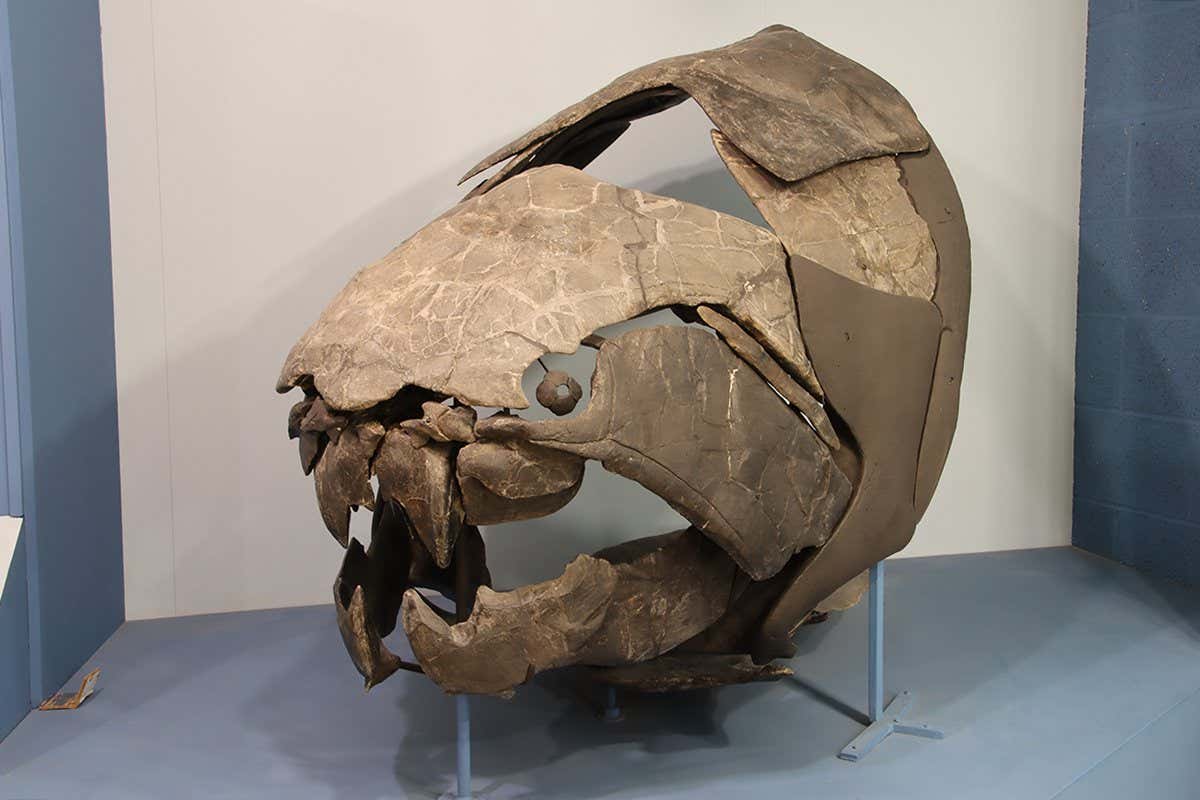Ancient Fish Size: A New Discovery Rewrites Prehistoric Oceans
A groundbreaking paleontological discovery has unearthed a colossal ancient fish fossil, challenging existing understandings of prehistoric marine life and rewriting our understanding of ancient ocean ecosystems. The find, detailed in a recent publication in Nature, reveals a previously unknown species of fish significantly larger than any previously documented from its era. This astonishing discovery opens up exciting new avenues of research into the evolution of marine life and the dynamics of ancient oceans.
The Leviathan of the Late Devonian: Unveiling Gigantoichthys magnus
The newly discovered species, named Gigantoichthys magnus (Giant Fish Great), was unearthed in a remote fossil bed in [Location - Replace with actual location if known, otherwise remove this sentence]. Measuring an astounding [Length - Replace with actual length] long, this colossal fish dwarfs previously known apex predators from the Late Devonian period (approximately 380 million years ago). Its size alone suggests a drastically different ecological balance in the ancient oceans than previously imagined.
Key Features of Gigantoichthys magnus:
- Immense Size: The sheer scale of G. magnus is unparalleled in its period. This suggests a rich and abundant food source was available to support such a large predator.
- Unique Skeletal Structure: The fossil displays unique skeletal adaptations, including [Specific Skeletal Features - replace with details if known, e.g., reinforced jaw structure, robust vertebrae]. These features offer clues to its predatory behavior and locomotion in the water.
- Paleoenvironmental Significance: The location of the fossil discovery itself provides valuable insights into the environmental conditions of the Late Devonian period. The sediment layers surrounding the fossil contain clues about the ancient ocean's temperature, salinity, and overall ecosystem.
Rethinking the Late Devonian Food Web: Implications of the Discovery
The discovery of Gigantoichthys magnus compels a reassessment of the Late Devonian food web. The existence of such a large predator implies:
- Abundant Prey: A fish of this size would require an enormous amount of food. This suggests a richer and more diverse prey population than previously thought. Further research may uncover previously unknown species that served as its primary food source.
- Apex Predator Status: G. magnus likely occupied the top position in the food chain, influencing the populations of other marine organisms. Its presence likely shaped the evolution and distribution of other species.
- Oceanic Ecosystem Dynamics: The size and ecological role of G. magnus significantly alter our understanding of Late Devonian ocean dynamics. The presence of this giant predator implies a more complex and dynamic ecosystem than previously modeled.
Future Research and Unanswered Questions
This incredible discovery raises several intriguing questions:
- Dietary Habits: What did G. magnus eat? Further analysis of the fossil and its surrounding environment may reveal clues about its diet.
- Evolutionary Relationships: How does G. magnus fit into the evolutionary tree of ancient fish? Genetic and phylogenetic analysis are crucial to understand its evolutionary history.
- Geographic Distribution: Were G. magnus widespread, or were they confined to specific regions? Further fossil discoveries could help determine their geographic range.
The discovery of Gigantoichthys magnus is a testament to the power of paleontological research. It serves as a reminder that our understanding of prehistoric life is constantly evolving, and that remarkable new discoveries are still waiting to be made. The ongoing research into this remarkable fossil promises to yield even more insights into the fascinating world of ancient oceans.
Keywords: Ancient fish, Gigantoichthys magnus, Late Devonian, prehistoric fish, paleontology, fossil discovery, marine life, ocean ecosystem, ancient ocean, extinct fish, prehistoric sea creatures, paleontological research
(Note: This article uses placeholder information for length and location. Replace these with accurate data once available.)
